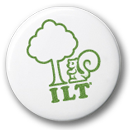Improving recycling habits in 2024 involves staying informed about current practices, adopting innovative strategies, and incorporating sustainable behaviors into daily life. Here are actionable steps to enhance your recycling efforts this year:
1. Stay Updated on Local Recycling Guidelines
Recycling guidelines can vary significantly by location and may change over time. Check with your local recycling center or municipal website for the most recent rules about what materials are accepted and how they should be prepared.
Contact Local Authorities: Reach out to your city or county’s waste management department for specific instructions.
Use Online Resources: Websites like Earth911 provide localized recycling information based on your ZIP code.
2. Reduce and Reuse Before Recycling
The best way to improve recycling is to minimize waste at the source and find ways to reuse items before they enter the recycling stream.
Buy in Bulk: Purchase items with less packaging or in bulk to reduce waste.
Reusable Containers: Opt for reusable containers, bags, and utensils.
DIY Reuse Projects: Repurpose items like jars, cardboard boxes, and old clothes creatively.
3. Proper Sorting and Cleaning of Recyclables
Contaminants can spoil a whole batch of recyclables. Ensure that you sort and clean materials correctly:
Rinse Containers: Clean food and drink containers to remove residues. A quick rinse is usually sufficient.
Remove Non-Recyclables: Take off caps, lids, and non-recyclable parts unless your local guidelines state otherwise.
Flatten Boxes: Break down cardboard boxes to save space in the recycling bin.
4. Understand E-Waste and Specialty Recycling
Electronic waste (e-waste) and other specialty items require different recycling processes.
E-Waste Collection: Locate e-waste collection points for electronics like batteries, phones, and laptops.
Recycling Programs: Use manufacturer take-back programs for electronics and appliances.
Hazardous Waste Disposal: Dispose of hazardous materials (e.g., paints, chemicals) at designated facilities.
5. Explore Composting
Organic waste, such as food scraps and yard waste, can be composted rather than thrown away.
Home Composting: Start a compost pile or use a compost bin for food scraps and garden waste.
Municipal Programs: Check if your city offers green waste collection or composting services.
Compostable Packaging: Use compostable packaging when possible and ensure it’s disposed of in compost bins.
6. Participate in Recycling Programs
Join or support programs that promote recycling in your community.
Community Clean-Ups: Volunteer for local clean-up events to help reduce litter and support recycling efforts.
School and Workplace Programs: Advocate for or help establish recycling initiatives in schools and workplaces.
Recycle Rewards: Look for programs that reward recycling, such as deposit return schemes for bottles and cans.
7. Educate and Advocate
Spread awareness and advocate for better recycling practices in your community.
Share Knowledge: Educate friends and family about proper recycling methods.
Social Media: Use social media platforms to share tips and updates on recycling.
Advocacy: Support policies and initiatives that enhance recycling infrastructure and services.
8. Embrace Advanced Recycling Technologies
Stay informed about and support innovative recycling technologies that improve efficiency and expand the types of materials that can be recycled.
Chemical Recycling: Learn about chemical recycling processes that can break down plastics into their basic components for reuse.
Recycling Apps: Use apps that provide guidance on how to recycle specific items and locate recycling centers.
9. Invest in Sustainable Products
Choose products made from recycled materials and those that are easier to recycle.
Eco-Friendly Brands: Support companies that prioritize sustainability and use recycled content in their products.
Sustainable Packaging: Opt for products with minimal or recyclable packaging.
10. Monitor and Track Your Progress
Keep track of your recycling habits and progress over time to identify areas for improvement.
Waste Audit: Conduct regular waste audits to see what you're throwing away and how much could be recycled.
Set Goals: Set specific goals to reduce waste and improve recycling, such as reducing single-use plastics or increasing the amount of composted organic waste.
Resources and Tools
Recycling Apps: Tools like Recycle Coach and iRecycle can help you understand local guidelines and where to recycle specific items.
Composting Guides: Resources like the EPA’s composting guide offer tips for starting and maintaining a composting system.
Educational Websites: Websites like Recycle Nation and How2Recycle provide comprehensive recycling information and updates.
By adopting these practices, you can significantly enhance your recycling habits and contribute to a more sustainable environment in 2024 and beyond.
Sources:
Earth911 - Recycling Guides

